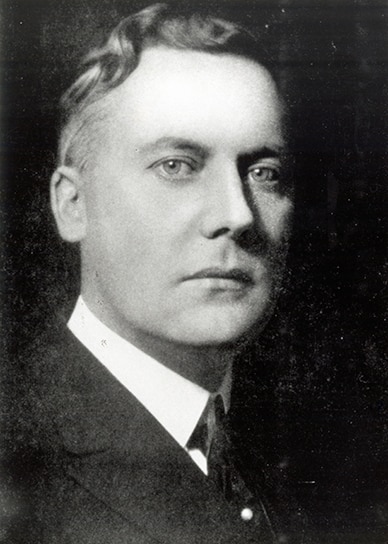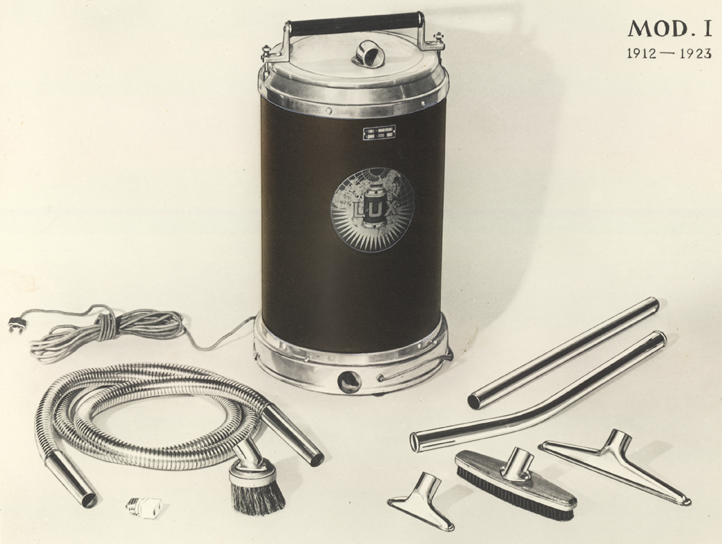In 1908, an ambitious, young, Swedish salesman, Axel Wenner-Gren, was on a visit to Vienna. In a store window, he spotted something that would shape the rest of his life: a cumbersome, 20 kilo American electrical vacuum cleaner. Wenner-Gren immediately understood that if he could make it lighter, he could create an attractive product that would shape living for the better for millions of people around the world.

Axel Wenner-Gren
A few years later as a sales agent for that very cleaner in Germany, Wenner-Gren had gathered all the experience he needed to start out on his own. Back in Stockholm he contacted two companies, Elektromekaniska and Lux. Elektromekaniska already produced a copy of the American cleaner for the Swedish market and immediately started to work with Wenner-Gren on a lighter version. At the same time, the kerosene outdoor lamp producer, Lux, had started to manufacture vacuum cleaners as a replacement for its declining lamp business. In 1912, the three partners launched their first cleaner, the Lux I, a revolutionary machine since they had managed to reduce the weight by one third, to 14 kilos.

The Lux I was the first vacuum cleaner that Axel Wenner-Gren designed with AB Lux
Lux I got off to a great sales start, but Wenner-Gren and his team were not satisfied. Consumers told them that 14 kilos was still too heavy, so they continued to work on an even lighter model. In 1913 they launched the Lux II, which was probably the first really consumer-friendly vacuum cleaner: it weighed only nine kilos.
Wenner-Gren who was the sole agent for Germany, France and the UK, now guaranteed that he could sell 5,000 machines in one year. This was a real stretch for the Lux factory. The orders kept coming in, until everything came to a halt in 1914 when World War I broke out.
During the war, production and sales continued on a smaller scale, mainly in Sweden. Wenner-Gren and his team, notably Elektromekaniska’s director Sven Carlstedt, continued the product development work. In 1916, they presented the Lux III, which weighed no more than 3.5 kilos. The Lux board (Lux was an independent company at this time), thought the new version was a toy and wouldn’t allow Wenner-Gren to use the Lux brand for this product. Wenner-Gren therefore started his own company, Elektron, in order to sell the product.
After the war, it was time to start to prepare for a real global expansion. On Aug 29, 1919, following a number of legal twists, Elektromekaniska, which was now a sleeping subsidiary to Elektron, changed its name to AB Electrolux in order to become the main sales company in Wenner-Gren’s group of companies. Electrolux promised to buy all its cleaners from the producer AB Lux for ten years, and in turn received the right to use the Lux-brand on its machines.
With the legal matters sorted out and with a new, ingenious name, everything was set for an astonishing expansion during the years to come.

